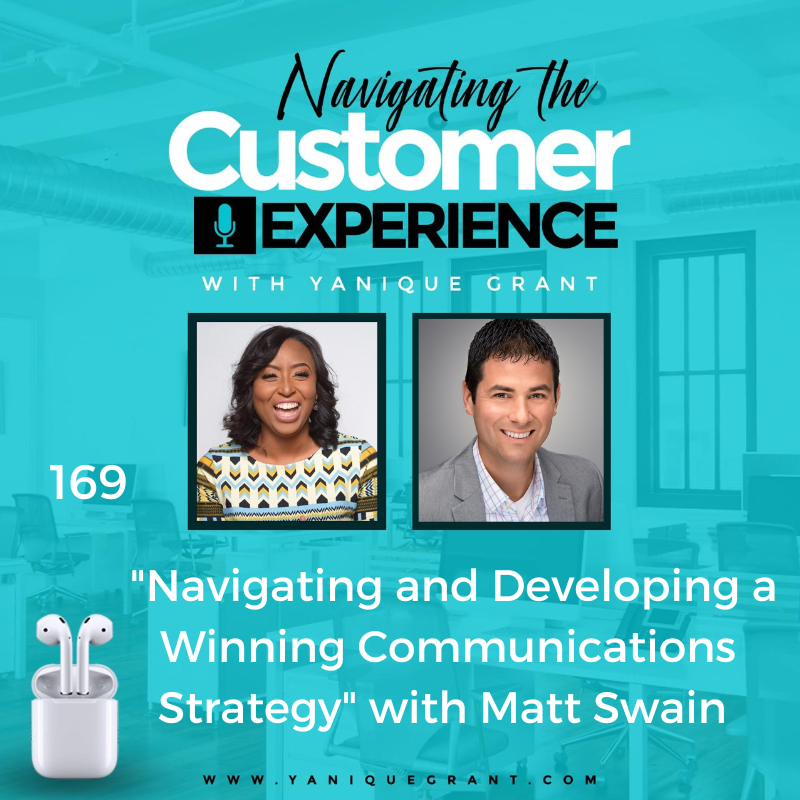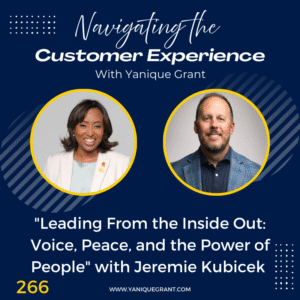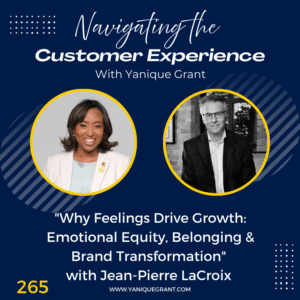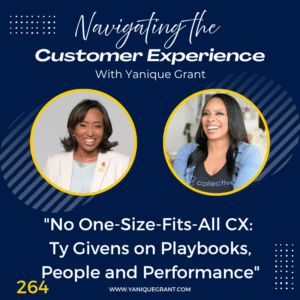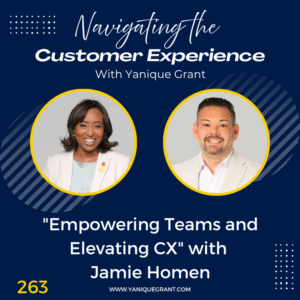Matt Swain is a recognized Customer Communications Industry Thought Leader. From delivering keynotes around the world to defining best practices, hundreds of well-known companies have relied on Matt’s expertise and research for their current and future omni-channel communication initiatives.
As Managing Director and Practice Lead for a Broadridge Communications Consulting, Matt brings in valuable market research and consulting expertise to clients relative to benchmarking, as well as for communication strategy, design and execution across print and digital channels.
Prior to joining Broadridge, Matt spent more than a decade at Keypoint Intelligence – InfoTrends, where he was a member of the senior management team with global responsibility for business development and customer communications advisory services. Matt is a graduate of Rochester Institute of Technology and holds a Master’s degree in print media.
Questions
- We always like to give our guests the opportunity to share in their own words, a little bit about their journey. How did you get to where you are today?
- The fourth annual CX and communication survey that your company had done, where you studied 3000 North American consumers, highlighting some of the major points and gaps in the customer experience two years into the pandemic. Could you tell us a little bit about the survey and some of the results that that survey created?
- What are some of the most interesting research that you have seen are conducted in the customer experience space, and could you share with us also maybe what are some of the things that have surprised you the most in that research?
- Now as it relates to personalization, the report says 65% of consumers would prefer to receive fewer, more tailored communications through their preferred channel. What has your research shown in terms of, do you still find companies all over the place?
- So, you said that consumers were looking for a more engaging digital experience, could you share with us maybe one or two things that you think a company could employ or put in place to make their digital experience more engaging?
- What are your thoughts on organizations, because digital, it’s been accelerated because organizations who weren’t even fully digital or were looking to put digital as part of their strategy definitely had to do some quick acceleration because of the fact that we’re all stuck at home. How do they bridge that gap? Because people I think still want human interaction?
- Could you share with us what’s the one online resource, tool, website or app that you absolutely can’t live without in your business?
- Can you also share with us what’s the one thing that’s going on in your life right now that you’re really excited about, either something you’re working on to develop yourself or your people?
- How can listeners find you online?
- Do you have a quote or a saying that during times of adversity or challenge, you’ll tend to revert to this quote if for any reason you get overwhelmed or challenge? And the quote kind of helps to get you back on track or just get you back refocused.
Highlights
Matt’s Journey
Matt stated that he was listening to that bio and he was thinking, he actually didn’t realize Yanique read the whole thing. So, thank you for doing that. As where you ended was that he holds a Master’s in print media and that’s a very specific degree, especially for a master’s degree. And many of the people that went through that programme, were going back to run print operations, they might have had a family business or otherwise.
And he was actually interested in print as one of the media channels that we now use to communicate. And so, actually, he did his Master’s Thesis on the shifting spend of companies across different media. So, print was a starting point for him but he spends a lot of time now helping clients transition from print to digital communications and look specifically at how to create better experiences with the communications that they send.
The Fourth Annual CX and Communication Survey Results Highlighting Major Points and Gaps in the Customer Experience : 2 Years into the Pandemic
Me: Now, in preparing for this interview, I was looking at the fourth annual CX and communications survey that your company had done, where you studied 3000 North American consumers, highlighting some of the major points and gaps in the customer experience two years into the pandemic. Could you tell us a little bit about the survey and some of the results that the survey created?
Matt shared that this was a passion project of his when he first started it, which was in 2019 and he has a really strong marketing and support team that helps execute on it. And what’s really been interesting watching the data over the last four years of conducting the research is, there have been some notable shifts, specifically relative to customer experience. So, for instance, in 2019, they found that 35% of consumers thought that most of the companies they did business with needed to improve the experiences they provide. So, let’s say you know, roughly one in three had that position.
In 2022 now that we’ve gone through, we’re well into a pandemic, depending on which way you look at it, they now find that 65% of consumers, so an increase of 30 percentage points, 65% of consumers think that most of the companies they do business with need to improve the experiences they provide. And that is quite a jarring shift from his perspective.
And he thinks it speaks to the increased expectation that we as consumers have on the companies that we do business with, but also it shows a separation of the leaders from the rest of the pack when it comes to customer service and customer experience.
Research Done in the Customer Experience Space
Me: Very true. And so, a big part, we’re all going through the pandemic, as you said, I guess it depends on how people want to look on it. But what are some of the most interesting research that you have seen are conducted in the customer experience space, and could you share with us also maybe what are some of the things that have surprised you the most in that research?
Matt shared that the research covers customer experience, but then also goes into specifics around what consumers are looking for from the companies they do business with. So, they found a lot of trending data around customer service, wanting better experiences when they needed that service experience. And at the same time, they’re also asking for the use of technology, AI, chatbots to be a first line of defence to answer easy questions. And he thinks this is actually tripping a lot of companies up because there’s technology out there that can reduce the cost to service a customer.
But the challenge is that companies are becoming too reliant on the technology, and it’s resulting in reduced customer satisfaction, because they’re not getting flipped to a live agent when they should be in that process.
So, a lot of the negative feedback that they see in the research is that people are looking for a sense of humanity or empathy, or “Let me speak to the Operator or make sure that I can understand the person that I speak to.”
And he thinks that that component is so critical, when you think about where somebody is in the journey when they need to contact you, there’s usually some challenge in the communications that you’ve sent, or they’re dealing with something very personal, and they need to be serviced in a more personal way. And so, it’s a really delicate balance.
So, they look at the impact from a customer service perspective of new technology it being incorporated into that journey. But then they’re also stepping back and saying, “Well, why did that person had to have to reach out in the first place?”
So again, through his lens, from a communication standpoint, it is, “Well, if you sent a bill or a statement to your customer…..
Was it summarized?
Was it easy to understand?
Was it written in plain language?
Did it have relevant content?”
Because ultimately, what they’re hoping that they can help their clients get to is a very seamless experience and that they send a communication whether it’s in print, or digitally, and the recipient can quickly digest the information and understand what action they need to take, review my account, pay a bill, sign a waiver, whatever that next step is, that’s what they’re hoping that they’re going to be able to do efficiently and hopefully reduce that aspect of call centre volume.
Personalization – Consumers Prefer Fewer, More Tailored Communication Through Their Preferred Channel
Me: Agreed. Now, in the survey that was done, you focused on customer experience omni-channel approach personalization. Now as it relates to personalization, the report says 65% of consumers would prefer to receive fewer, more tailored communications through their preferred channel. What has your research shown in terms of, do you still find companies all over the place? Or are they more taking a more centralized approach?
Because I do agree, I think it’s really great if you could generally get everything in one place instead of you’re looking up information here but that information that’s located on that platform is not located on this one, is just like you’re all over the place.
Matt stated that there’s another aspect to that, which is who are the 30 something percent of people that don’t want that right?
From a personalization standpoint, actually specific to that, they do find people that want to remain somewhat anonymous digitally and they don’t want companies to use their personal data in any other way than they should be using. And they actually asked a separate question around sharing of personal data, so additional data that you as a company don’t need, but would the consumer provide it to you if it enhance their experience, created a better experience?
And they found that about half of Gen Z and Millennial respondents said that they would be willing to provide that and that dropped off for a Gen X and baby boomer audience that was less willing to provide incremental information.
Going back to Yanique’s original question around centralization. He thinks they find one of the biggest challenges in a lot of their clients, especially their larger clients is they’ve grown through acquisitions, they have different lines, each line of business has its own underlying systems. And each head of the business might kind of operate their own fiefdom to some extent, which from a business owner perspective, can be advantageous or easier.
But from a consumer or investor or recipient perspective, that can be really painful because he’s having to log into different systems, or he doesn’t have a total view of his relationship with that company in one centralized location.
And he thinks that is an area that really needs to be addressed. But it comes back to the underlying systems that the people, the processes and the technology supporting that ecosystem that needs to be simplified and addressed before you can deliver on that better experience that the consumer is asking for.
Me: Agreed. Sometimes I think organizations take simple and make it complex when it really should just be so easy. And I’ll give you an example. I’m currently doing some market research for a client and in the midst in the market research training that we did with persons yesterday, we forgot to ask them if any of them were existing customers of that particular company. So, I kind of just wanted to send out a quick google form to capture that information so we had it on file. And so, we jump on Google Forms simply asking one question, and I literally spent like probably about 15 minutes, just trying to Google, how do you get multiple responses in a Google form?
And there was like, no clear answer, because it has multiple choice, but then when we did the test, and we clicked on it, we realized that the respondent would only be able to select one answer. And there may be cases where they are a customer of the company, but they’re not a customer of all business lines.
And so, there are three business lines that we’re doing the market research for, and we just wanted to find out if these persons were one customer of a business line, or no customer, or multiple customers have a business line. And it took me so long to find it.
And I said to myself, Google usually makes things so simple. Why in their form did I have to do so much digging to figure out that instead of selecting multiple choice, I should have selected checkbox, because checkbox acts like a multiple choice, but it allows you to select multiple responses or answers. And that came to mind a while ago, just because of what you said.
I find that sometimes we think the technology is there to help us, it’s not supposed to be rocket science, I’m not supposed to be trying to figure out, okay, where do I find this information.
It should be there, quick and easy, either in settings or as a drop down so that you can know that that’s an option that you can exercise on us. Would you not agree?
Matt shared that we would and he thinks the irony, there is part of ensuring that you’ve delivered on that better experience is doing that voice of customer that surveying much like you would use the Google Form to do surveying of your audience, right?
So, they find that often where, again, through his lens they’ll work with a client and say, let’s conduct some voice of customer research and they use a platform where they’ll enable a customer of theirs to go in and navigate their online account. And they’ll say one of the common prompts is navigate to your most recent statement.
And it’s really interesting to watch people try to find that statement and it’s usually in a drop down, the third or fourth drop down over which isn’t really that intuitive to know that a statement is going to be the eighth line on the drop down. And it’s one of those where for those people that were building it, they know exactly where it is because that’s how they built it and that’s the approach they took. But for the consumer to navigate to it, that helps expose may be an opportunity to improve or streamline that experience for consumers that are looking to get access to that document.
Me: Yeah, I agreed. Totally agree. I guess as you said, that’s why it’s important to test it because then you get to see multiple approaches as to how different people will navigate on that platform. In customer service, we have this thing, this example that we use that we normally say, a school or a university, they basically wanted to see what the path was of the students as they were walking on the campus. And so, they waited until it snowed, and then they kind of watched people’s pattern to see where they walked and that’s what they use as a guide to make that the actual pathway.
Because you might create a situation or a building where you’ve created a pathway for people to walk but maybe that’s not where they naturally gravitate to walk. And so, if you look on it from an online perspective, if someone goes on a site, maybe because of how they’re trained, because of other platforms that they’ve used, or just genuine human interaction or intuition, they may go to the right of the page, or to the top of the page thinking that’s where they’re going to find that particular item. But maybe that’s not where it’s supposed to be. And if you look at the pattern of how people operate, it would indicate to you if the structure that you’re putting in place is really the best place to place that.
Are people going to be able to find it easily?
Is it going to be frustrating for them?
Are they going to have to be reaching out to your support team to find out how to get that information?
How easy is it for them to find this information, and it should be easy enough that I think a five or six year old should be able to find it.
Matt shared that he loves the analogy with the snow on the surface, he immediately goes to that visual that we’ve all seen where you see the trampled trodden and dirt path that cuts the corner, the concrete path, or whatever it is the cobblestone. But he also thinks there’s also a component of this, that when we think about what the company is trying to achieve, and then looking at what the experience is, so he uses that statement navigation as an example.
These are the same companies that are very aggressively asking their customer base to go paperless. So, take the paper out of the process, because it saves us money, we don’t have to print and mail it. But then when you look at the value proposition for the consumer, it’s not there, right?
Like what’s in it for me to go paperless?
Now I have to go to your website and navigate and try to find this and the experience is no better, usually it’s a static. And he’s generically saying this, not all of their clients are this way. But it points you to a static document, not an interactive digital experience that provides more value than he would have gotten in paper.
And that was actually a really interesting takeaway from the research, which was 71% of consumers that had not gone paperless said that they would do so if the company provided a more engaging digital experience. And that’s like the “big aha,” which is if we’re creating better experiences, we’re improving customer experience, but we’re also achieving these operational goals of reducing print and mail and otherwise.
Consumers Looking for a More Engaging Digital Experience
Me: Amazing. So, you said that consumers were looking for a more engaging digital experience, could you share with us maybe one or two things that you think a company could employ or put in place to make their digital experience more engaging?
Matt shared that one of the weakest links of many companies’ communication strategy, and again, through his lens, right, so those that are sending a bill or a statement, is that bill ready or statement ready notification.
So, think of the banks, the insurance companies, the telecommunications companies, utilities that you work with, they’ll send you that note that just says, “Your statement’s ready, click here to view and access.”
And sometimes it doesn’t look anything like the rest of the brand that they’ve invested heavily in, it’s a monthly communication. So sometimes it’s the most frequent touchpoint that I have with that company, is this this generic email.
And one of the things that they do with clients, there are two approaches. One is an enhanced email where they’re able to deliver more content directly within the email. So, instead of just saying it’s ready, let me provide some value that directionally shows you how you did this month versus last or things to think about or other actions they’re hoping you’ll take.
Or they can redirect you to a microsite. So, instead of having to go back to the portal and log into the website, that way, you can authenticate through the email and get the full details in a microsite or a personalized experience that’s specific to that statement or bill that he’s asking you to look at.
Organizations Looking to Put Digital as Part of Their Strategy – How do They Bridge That Gap as People Still Want Human Interaction
Me: And what are your thoughts on organizations, because digital is definitely I know it’s been accelerated, I would say 10 times since the pandemic because organizations who weren’t even fully digital or were looking to put digital as part of their strategy definitely had to do some quick acceleration because of the fact that we were all stuck at home. And of course, this was the only way that they could ensure that there was some continuity of business with their clients. But let’s say you use digital, I’m all for digital, I believe that it’s really important, technology is great.
But I do also believe that you should make yourself accessible if I do need to speak to a live human being. And I find that sometimes, the companies, they take on these technology tools, and when they take the technology tools on, and hopefully the technology should help you. So, for example, let’s say I wanted to reach out to my utility company, and they have this chatbot on your website. And the chatbots name is let’s say, Ella, I say, “Hi, Ella.” And Ella is able to answer very standard questions. But of course, because I know Ella can’t answer me, I’m going to say to Ella, automatically, please connect me to a representative. So, she can transfer the call to somebody, the conversation to somebody who can actually help me. But that in itself doesn’t work very well, because nobody actually is able to be connected to. And when you try to call them on the phone, you’re not able to get through to them, because you’re on hold for very long periods of time, 53 minutes, 60 odd minutes.
How do they bridge that gap? Because people I think still want human interaction!
Matt sated absolutely. And that’s the challenge that he’s seeing now. It’s coming through in the research that they’re doing and some of the client discussions, which is that the jump to embrace the technology from you could say it’s customer experience led, oftentimes it’s cost cutting led, there’s an operational savings to implementing that chatbot.
Hopefully, that there is a balance that there is the improved customer experience of getting something answered quickly, like, “Where should I mail my bill to or what are your hours of operation?” Or those types of things that somebody might get value out of the chatbot.
But your comment about that hold time, where you then go on the phone, and you have to listen to a rotating one minute message that keeps telling you go online, you can conduct everything there yet, that’s where you started, and you weren’t able to achieve what you needed so you came to the phone, but you still have that hour wait.
He thinks it does speak to the need to have the capability of flexing the staff. So, you might have your full-time utility staff, and then you can tap into a third party that might charge you a bit of a premium, but they can help you during those surge times as well.
App, Website or Tool that Matt Absolutely Can’t Live Without in His Business
When asked about online resources that he cannot live without in his business, Matt stated that he would say it is the Voice of Customer Research Tool that they use. And it is so efficient to be able to go in and get, he wouldn’t call it real time feedback, actually, he can do real time if he sets it up that way.
But if he’s looking to that, a new concept, or go into a client meeting prepared with feedback from their customer base, so it’s not just, “Here’s what we’re hearing from generic surveys but here’s what some of your customers said about you. And I know that you know a lot of this already, but we just wanted to come prepared to the meeting.”
It’s such a valuable tool in that way. So, whether it’s AB testing, or a quick poll or survey, or getting feedback on a new concept or design, it can be a really valuable way of bringing data and analytics to the discussion with the client or to make a more robust solution if they’re building something on their own.
What Matt is Really Excited About Now!
Matt shared that Broadridge is a pretty large company, they have 14,000 Associates across 21 countries, they also support a lot of clients. So, they have actually sent 7 billion communications a year on behalf of their clients. So, that results in a little bit of practicing what you preach.
So, they have a client success team at Broadridge and he’s a member of the client satisfaction and engagement work stream and in that work stream, they’re gathering perspective from their clients about what Broadridge does well, where they can be a better partner, how they should be thinking about their products or services, their technology offerings going forward. And that’s all in the hopes of best positioning themselves as their partners of the future.
So, they encourage their clients to do that voice of customer research to make sure that they’re taking a design thinking approach and a customer first approach to the way that they support their clients and consumer.
In many cases, they’re doing the same within their organization, he thinks it’s incredibly important to always keep that in perspective that you need to have your finger on the pulse of what’s happening within your organization, the trends that are influencing outside forces, and then ultimately, how that can help better position you to be a better partner going forward.
Where Can We Find Matt Online
Website – www.broadridge.com
LinkedIn – Broadridge Communications Consulting
Twitter – @Broadridge
Twitter – @AskMattSwain
LinkedIn – Matt Swain
Podcast – Reimagining Communications with Matt Swain
Quote or Saying that During Times of Adversity Matt Uses
When asked about quote or saying that he tends to revert to, Matt stated that it’s funny, as Yanique was asking the question, he had all these quotes just going through his head and the one that kept kind of pushing its way to the front was, “Do no harm.” And he thinks the do no harm approach is a really critical one, especially when you’re thinking with a customer service lens or a customer experience lens, that if you can live by do no harm mantra, he thinks you’re going be in a good position.
Please connect with us on Twitter @navigatingcx and also join our Private Facebook Community – Navigating the Customer Experience and listen to our FB Lives weekly with a new guest
Grab the Freebie on Our Website – TOP 10 Online Business Resources for Small Business Owners
The ABC’s of a Fantastic Customer Experience
Do you want to pivot your online customer experience and build loyalty – get a copy of “The ABC’s of a Fantastic Customer Experience.”
The ABC’s of a Fantastic Customer Experience provides 26 easy to follow steps and techniques that helps your business to achieve success and build brand loyalty.
This Guide to Limitless, Happy and Loyal Customers will help you to strengthen your service delivery, enhance your knowledge and appreciation of the customer experience and provide tips and practical strategies that you can start implementing immediately!
This book will develop your customer service skills and sharpen your attention to detail when serving others.
Master your customer experience and develop those knock your socks off techniques that will lead to lifetime customers. Your customers will only want to work with your business and it will be your brand differentiator. It will lead to recruiters to seek you out by providing practical examples on how to deliver a winning customer service experience!

